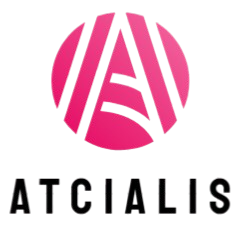COBOL Programming
COBOL Jobs vs. Modern Languages: Salary and Stability Compared
Demand for dependable software never sleeps. Bank ledgers, insurance claims, and airline reservations still lean on decades-old COBOL while fast-moving apps rely on Python, JavaScript, and other modern stacks. Understanding how these two talent pools pay and how long they last can shape a developer’s next move with Launch Recruitment.
Why COBOL Still Matters
COBOL code runs huge transactional systems that can’t afford downtime. Because few universities teach it, supply of specialists is thin while demand persists. That scarcity often pushes pay up and creates long contracts.
Key industries that keep COBOL alive
- Banking and card processing
- Insurance policy administration
- Government benefits and taxation
- Airline and rail reservation systems
Salary Snapshot
COBOL Salary Range
- Mid-level professional: ≈ $90 k – $110 k USD
- Senior specialist/consultant: ≈ $115 k – $140 k USD
- Contractor with niche domain expertise: Day rates can top $900
Why the premium? Employers compete for a shrinking talent pool and pay extra for legacy system knowledge, regulatory awareness, and on-call reliability.
Modern Language Salary Range
- Full-stack developer (JavaScript, TypeScript, Go): ≈ $80 k – $125 k USD
- Cloud-native engineer (Python, Rust, Kotlin): ≈ $95 k – $135 k USD
- Staff or principal engineer: $140 k + with equity potential
Modern stacks can still pay more at very senior levels, but equity or bonus structures often carry that difference, adding an element of risk.
Stability and Job Security

Factors Boosting COBOL Stability
- Long-term maintenance contracts—systems change slowly.
- Strict compliance rules—rewrites fail audits more easily.
- High switching cost—mainframes are expensive to replace.
- Retirements create succession demand.
Modern Language Stability
Modern roles rise and fall with product cycles. A framework might fade in five years, forcing reskilling. Cloud migration skills, however, age well because they revolve around architectural principles rather than syntax alone.
Quick contrasts
| Aspect | COBOL | Modern Languages |
| Average project length | 5–10 years | 6–24 months |
| Risk of redundancy | Low | Medium–High |
| Tech refresh cadence | Rare | Continuous |
Career Growth and Learning Curve
- COBOL: Steeper initial curve—mainframe tooling, batch windows, fixed-format syntax. Once mastered, new concepts arrive slowly.
- Modern stacks: Continuous learning—micro-services, containers, AI libraries. Growth is diverse but requires constant study.
- Soft-skill upside: COBOL veterans often segue into architecture or team leadership because they understand the full business flow.
Conclusion
Both paths pay well, but how they pay and why they last differ. COBOL rewards rarity and reliability with solid salaries and low churn, while modern languages trade constant learning and potential upside for faster project cycles. Gauge your appetite for change, preferred learning rhythm, and desired pay structure before deciding where to invest your time. For tailored opportunities across both worlds, connect with Launch Recruitment.

